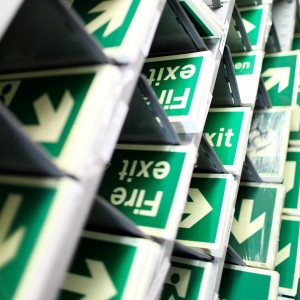Recently added item(s)
You have no items in your basket.

In part one of our article on managing false fire alarm incidents, we looked at the top five major causes of false alarms as cited by fire brigades and what part the fire system designer can play in reducing costly false alarms.
In this second part, we look at a few more of the reasons behind the large rise in false alarm calls to the brigades and how they can best be avoided.
Poorly trained users: When completing a fire alarm install, it’s all too easy for the engineer to test the last detector, check the panel is showing “normal” and then pack up his tools and leave, without first fully demonstrating the fire alarm to the end user. While explaining the functions of the detectors and alarms, there is also an opportunity to cover the avoidance of false alarms. Of course, in the case of a building site, the end user may not be present on handover so it is extremely important for the installation company or engineer to allow for a return visit to demonstrate the system, within the cost of the fire alarm. This of course extends to explaining the importance of the management of faults or pre-alarm, which may well be a precursor to false alarms.
Lack of maintenance: Maintenance is critical in avoiding false alarms. As mentioned in our last article it is important to site detectors away from air conditioning and fresh air grills. But detectors do need to be checked at each service visit to ensure that there is no build-up of dirt or dust. They are best kept clean by using a detector duster spray on them.
It is also very important that all detectors are tested at least once a year. At Fire Depot we stock the Testifier range of testers to ensure that you complete the service efficiently and safely. And remember, it’s not only the fire alarm system (including the detectors) which needs checking. This was never better illustrated than the year the bugler in Gloucester shopping centre was just about to play The Last Post at 11am on Remembrance Day before the two minutes silence, which also happened to be the exact moment that someone chose to turn on an electric heater for the first time that autumn! The result was three minutes of alarm bells instead of the traditional silence!
The system being tested without informing the call centre: I have to admit that on one occasion at least, I have been testing a fire alarm and heard the approaching sound of sirens heralding the arrival of not just one, but three fire engines on site because I had forgotten to call the monitoring centre and take the system off watch.
Just about any system that is being monitored will rely on human intervention to make sure the signals don’t go through, but it can be made easier by fitting a relay isolation switch, with an indicator by the panel to isolate the signal relay. Better still, with an addressable system you can use a key switch on the panel linked to an input, which is also programmed to show an isolation at the panel. In this way the site is not left without fire cover should human memory fail and forget to switch the monitoring back on.
Steam, aerosols and other fumes activating the detectors: It is very important for the designer to take into account the potential for steam, the use of aerosols and other fumes which may occur once the building is in use. Probably the most obvious example of this is hotel bedrooms, with steam from the showers and the use of hair sprays etc. The correct detector needs to be selected and positioned. Many hotels also have a search time programmed into the cause and effect programming, which needs to be recorded and checked to ensure that it is correctly set up.
A contractor working near a detector: This is quite a common source of false alarms and shows the need for a “hot work” permit to work, as well as the use of detector covers, (which are supplied with new alarms) being made available for temporary use. The cover also will be useful if carrying out disk cutting work to stop contamination of the detector.
Tim Mann has more than 30 years’ experience in the electrical industry and has specialised in the fire protection industry for the last 20 years. As Group Technical Manager at Sentura Group, his role is to provide help and advice to ensure that customer’s installations are done right first time and to assist in solving their existing equipment and installations problems.